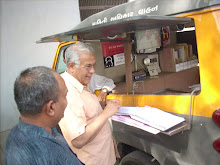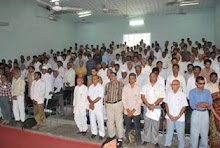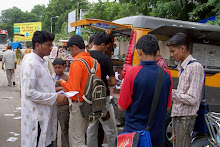Times of India: New Delhi: Monday, August 03, 2015.
Records of
death penalty convicts who have been executed since independence have gone
missing from many prisons with the National Law University (NLU), conducting a
first of its kind study, able to confirm data related to 755 executions since
1947.
"Some
prison authorities have written to us that either the records have been lost or
destroyed by termites," NLU director Anup Surendranath told TOI, who is
heading the death penalty research project. The NLU is compiling data on all
prisoners who have been executed since independence with the help of the
central government.
The missing
files are not only a serious lapse on part of prison authorities but has also
hampered an ongoing attempt to study all death row convicts to ascertain the
fairness of the capital punishment jurisprudence, particularly those who have
been executed in independent India.
The casual
attitude towards death row convicts is reflected in the loss of mercy pleas of
Krishna Mochi and three others in the Krishna Mochi & Ors vs. Bihar case of
2001. Convicted by the TADA court, mercy pleas of the four have been lost by
the Union home ministry. Their pleas were sent to the President in 2003, and a
recent RTI response to Suhas Chakma of Asian Centre for Human Rights has
revealed that the home ministry has no records available. "These papers
have evidently been lost," Chakma said.
Loss of data
on executed prisoners reflects poorly on the record-keeping of the government
and the judicial system. Incidentally, the 35th report of the law commission
had confirmed execution of at least 1,410 death row prisoners in a span of 10
years between 1953 and 1963.
Data by the
National Crime Records Bureau is also not without gaps. For example the NCRB
claims that as many as 2,052 individuals were awarded capital punishment by
courts between 1998 and 2013. And the NCRB also says between 2001 and 2013 the
number of those whose death sentences were commuted was double: 4,497 persons.
CHRI's
Venkatesh Nayak says that this is where the NCRB data becomes
"questionable". "The discrepancies probably crept in when jail
authorities counted all commutations even those of shortened prison time,"
he said.
"Information
on executions are sourced from various prisons and courts across the country
which do not reveal either the religious or caste backgrounds of the convicts
who have been executed," Surendranath points out. The NLU report on death
penalty is scheduled for release in mid-August where a detailed analysis of
socio-economic profile, legal representation and duration on death row would be
made public.
The NLU has
conducted interviews of 373 surviving death penalty convicts and has drawn
their socio-economic profile. The analysis of these surviving prisoners shows
that an overwhelming majority of them are from backward class, religious
minorities and economically vulnerable classes. In the category of terror
offences, 94% prisoners sentenced to death are Dalits and religious minorities.
"We have
been unable to find an exhaustive list of prisoners executed in India. However,
as per a report of the Law Commission (1967), the total number of cases in
which the sentence of death was executed from 1953 to 1963 was 1,410,"
Surendranath said.














































































